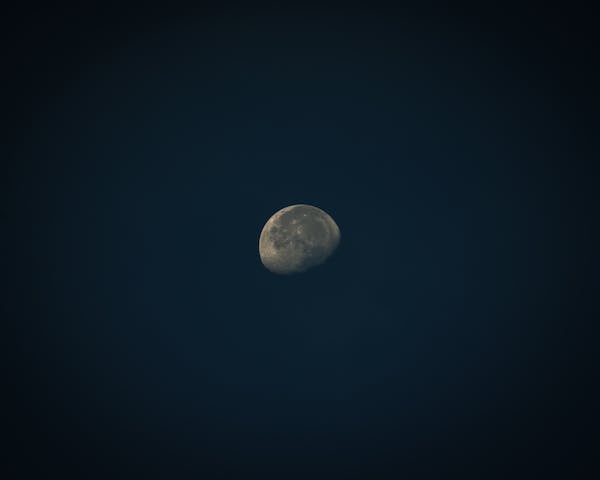
Lunar eclipses have long captivated humanity, offering a celestial spectacle that merges science with wonder. As we approach 2024, anticipation builds for the upcoming lunar eclipses that promise to dazzle skywatchers across the globe. Understanding Lunar eclipses 2024: When, where & how to see them is essential for those eager to witness these extraordinary events.
What is a Lunar Eclipse?
Before diving into the specifics of Lunar eclipses 2024: When, where & how to see them, it’s essential to grasp the basics of what a lunar eclipse is. A lunar eclipse occurs when the Earth positions itself directly between the Sun and the Moon, casting a shadow on the Moon. This can only happen during a full moon when the Sun, Earth, and Moon are perfectly aligned in a straight line. There are three types of lunar eclipses: total, partial, and penumbral.
- Total Lunar Eclipse: The entire Moon falls within Earth’s umbra (the central, darkest part of its shadow).
- Partial Lunar Eclipse: Only a portion of the Moon enters Earth’s umbra.
- Penumbral Lunar Eclipse: The Moon passes through Earth’s penumbral shadow, causing a subtle shading.
When Will the Lunar Eclipses of 2024 Occur?
The year 2024 is set to host two significant lunar eclipses, each offering unique viewing opportunities for enthusiasts. These eclipses will be visible from various parts of the world, providing a rare chance to witness the Earth’s shadow dance across the lunar surface.
April 25-26, 2024: Partial Lunar Eclipse
The first of the two lunar eclipses in 2024 will occur on the night of April 25th and continue into the early hours of April 26th. This will be a partial lunar eclipse, where a portion of the Moon will slip into Earth’s umbra. While not as dramatic as a total lunar eclipse, the event will still provide a stunning visual experience.
- Visibility: The eclipse will be visible across parts of Europe, Asia, Africa, and Australia. North America will miss out on this one.
- Best Viewing Time: The eclipse will reach its maximum at around 04:30 UTC. This is when the greatest portion of the Moon will be covered by Earth’s shadow.
October 18-19, 2024: Penumbral Lunar Eclipse
Later in the year, on October 18th, a penumbral lunar eclipse will grace the skies. Though more subtle than its partial counterpart, the penumbral eclipse will still be a treat for those who know what to look for.
- Visibility: This eclipse will be visible from Europe, Africa, Asia, and Australia. Once again, North America will not be in the viewing zone.
- Best Viewing Time: The eclipse will reach its peak at approximately 20:35 UTC, where the shading will be most apparent.
Where to See the Lunar Eclipses of 2024?
Knowing Lunar eclipses 2024: When, where & how to see them is crucial for planning your observation. The location is key, as light pollution and weather conditions can significantly affect your viewing experience.
Optimal Viewing Locations
- Europe: For both eclipses, Europe offers a prime location. Rural areas away from city lights will provide the best viewing conditions. Locations such as the Scottish Highlands, the French countryside, and the remote areas of Eastern Europe will offer dark skies and minimal light pollution.
- Africa: The vast deserts of Africa, such as the Sahara, provide ideal conditions for viewing lunar eclipses. The clear skies and lack of artificial light make it a perfect spot for skywatchers.
- Asia: From the Himalayas to the remote islands of Southeast Asia, there are numerous places to enjoy the lunar eclipses. The key is to find a location with clear skies and little to no artificial light.
- Australia: The Outback’s vast expanses offer some of the darkest skies in the world, making it an excellent choice for viewing the eclipses.
Planning Your Observation
To fully appreciate Lunar eclipses 2024: When, where & how to see them, planning is essential. Start by checking the local weather forecast a few days before the eclipse. Clear skies are vital for an unobstructed view. Additionally, consider investing in a good pair of binoculars or a telescope to enhance your experience. While lunar eclipses are visible to the naked eye, optical aids can provide a more detailed view of the event.
How to Experience the Lunar Eclipses of 2024
Experiencing Lunar eclipses 2024: When, where & how to see them is more than just looking up at the sky. It’s about immersing yourself in the wonder of the cosmos and understanding the science behind these celestial events.
Preparation Tips
- Choose the Right Spot: As mentioned earlier, selecting a location with minimal light pollution is crucial. National parks, rural areas, and remote beaches are excellent choices.
- Use Technology: Several apps and websites provide real-time tracking of lunar eclipses. These tools can help you know exactly when the eclipse will start and reach its peak in your area.
- Bring the Right Gear: While you don’t need any special equipment to view a lunar eclipse, binoculars or a telescope can enhance the experience. A camera with a good zoom lens is also great for capturing the moment.
- Invite Friends and Family: Witnessing a lunar eclipse can be a communal experience. Share the wonder with others by organizing a small viewing party.
Understanding the Significance
Lunar eclipses have always been more than just astronomical events. Throughout history, they have been viewed with awe and reverence, often imbued with cultural and spiritual significance. In many ancient cultures, lunar eclipses were seen as omens or signs from the gods. Today, while we understand the science behind them, the sense of wonder remains.
Conclusion
Lunar eclipses 2024: When, where & how to see them offers a unique opportunity to connect with the cosmos. Whether you’re a seasoned astronomer or a casual skywatcher, the lunar eclipses of 2024 promise to be memorable events. By knowing when and where to watch, and how to prepare, you’ll be well on your way to experiencing the magic of these celestial phenomena. So mark your calendars, gather your gear, and get ready to witness the Earth’s shadow dance across the Moon in 2024.

